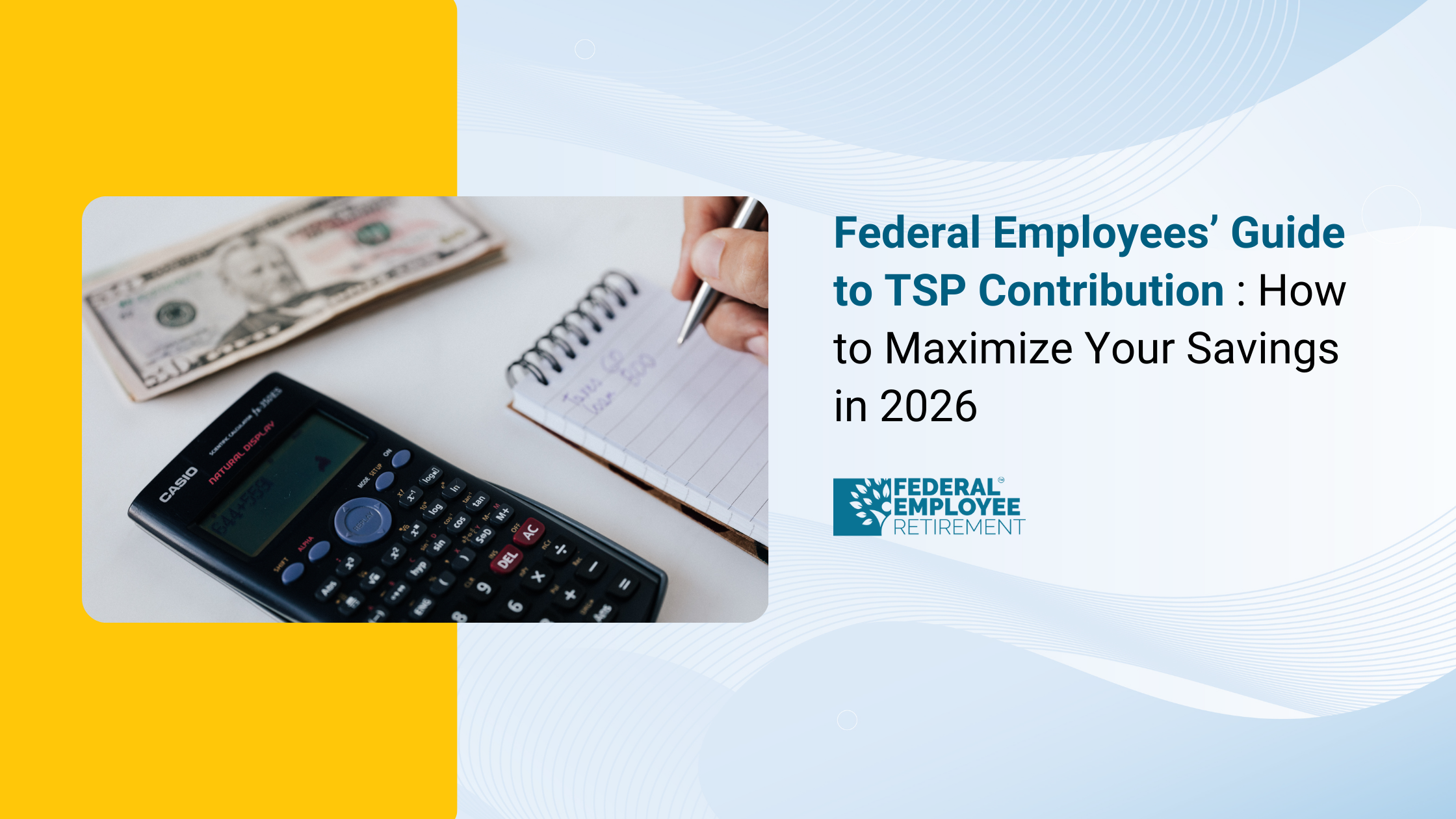You’re not alone; 4,359 federal employees booked their free review.
%20Guide%202025%E2%80%932026.jpg)
Federal Employees Retirement System (FERS) 2025–2026: Key Changes & Benefits
The Federal Employees Retirement System (FERS) is the cornerstone of financial security for millions of federal workers. But in 2025, this critical safety net is under pressure. With recent legislative proposals aimed at trimming federal retirement benefits including cuts to FERS annuities and changes to the Special Retirement Supplement federal employees need to pay close attention.
So what’s changing, how could it affect you, and what steps should you take now? This guide breaks down the updates, explains the risks, and helps you prepare for your retirement future with clarity and confidence.
What Is the Federal Employees Retirement System (FERS)?
FERS is the retirement plan for U.S. federal civilian employees. It has three major components:
- Basic Benefit Plan – Your pension based on your salary and years of service.
- Social Security – You pay into and receive benefits like private-sector workers.
- Thrift Savings Plan (TSP) – A defined contribution plan (similar to a 401(k)).
These elements work together to provide a solid retirement foundation.
Proposed Cuts in 2025: What’s at Risk?
In May 2025, the House passed a reconciliation bill that proposes reductions to federal employee retirement benefits. The proposed changes include:
- Eliminating the FERS annuity supplement (for those retiring before age 62)
- Increasing employee contributions to the pension plan, without corresponding increases in benefits
- Switching to a high-5 average for pension calculation instead of high-3, potentially lowering payouts
- Reducing or eliminating COLAs for certain annuitants
If passed, these changes could significantly reduce total retirement income for both current and future retirees.
Understanding High-3 vs High-5 Calculation
Currently, your FERS pension is calculated using your High-3 average salary, which is the highest average pay over any three consecutive years.
Proposed changes suggest a shift to a High-5 average, meaning lower pension estimates for many federal workers. For example:
- High-3 Estimate (Current): $95,000
- High-5 Estimate (Proposed): $88,000
This could lead to a 5%–10% reduction in annual pension payouts.
Action Step: Maximise your earnings in the last 5 years of federal service if these changes pass.
What About the FERS Annuity Supplement?
The FERS Supplement is meant to bridge the gap between retirement and age 62, when Social Security begins.
If Congress cuts the supplement, employees retiring before age 62 will lose thousands annually unless they delay retirement or adjust their income plans.
Who It Affects Most: Law enforcement, air traffic controllers, and other early-out occupations.
Check out the - FERS supplement calculator
COLA Reductions: How Inflation Adjustments Might Shrink
Cost-of-Living Adjustments (COLAs) help retirees keep pace with inflation. Proposed changes could:
- Eliminate COLAs for FERS retirees under 62
- Reduce COLAs by 0.5% annually for all FERS recipients
This could have long-term compounding impacts on your financial security especially given rising healthcare and living costs.
What Should Federal Employees Do Right Now?
- Get a Retirement Estimate: Use the FERS calculator or speak with a retirement advisor.
- Maximise TSP Contributions: Consider catch-up contributions if over 50.
- Track the Legislation: Bookmark GovExec and FedWeek for updates.
- Plan for a Delayed Retirement: Consider staying until 62 if the supplement is removed.
- Adjust Your High-5 Strategy: Aim for promotions or detail assignments to raise your average pay.
Conclusion: Prepare Early and Stay Informed
The FERS system is at a crossroads. With proposed legislative changes, every federal employee should take the time to reassess their retirement strategy now not later.
Whether you're five years out or only months away from retiring, proper planning can make the difference between a secure retirement and unexpected shortfalls. Stay up to date, use available tools, and don’t hesitate to seek personalised advice from a federal retirement advisor.
Also read: Federal Employees Retirement System 101 - What It Is? And How Does It Work?
FAQs
Will FERS benefits be cut in 2026?
If the proposed legislation is signed into law, cuts to the annuity supplement and changes to COLAs and pension formulas could begin in fiscal year 2026.
How is the FERS pension calculated?
Currently, it’s based on your High-3 salary, years of service, and a 1% multiplier (or 1.1% if you retire at 62+ with 20 years).
Can I increase my FERS pension before retiring?
Yes, by increasing your High-3 (or High-5) salary through promotions or overtime and working longer.
Is the FERS supplement going away?
It may be eliminated under the House proposal passed in May 2025, especially for early retirees.


Get Updated
Subscribe to our weekly updates for the latest on retirement planning, federal benefits, exclusive webinars, and more!
Download Federal Retirement: Step-by-step Checklist
This comprehensive guide will help you understand your federal benefits, optimize your savings, and plan for a comfortable future.



.png)








